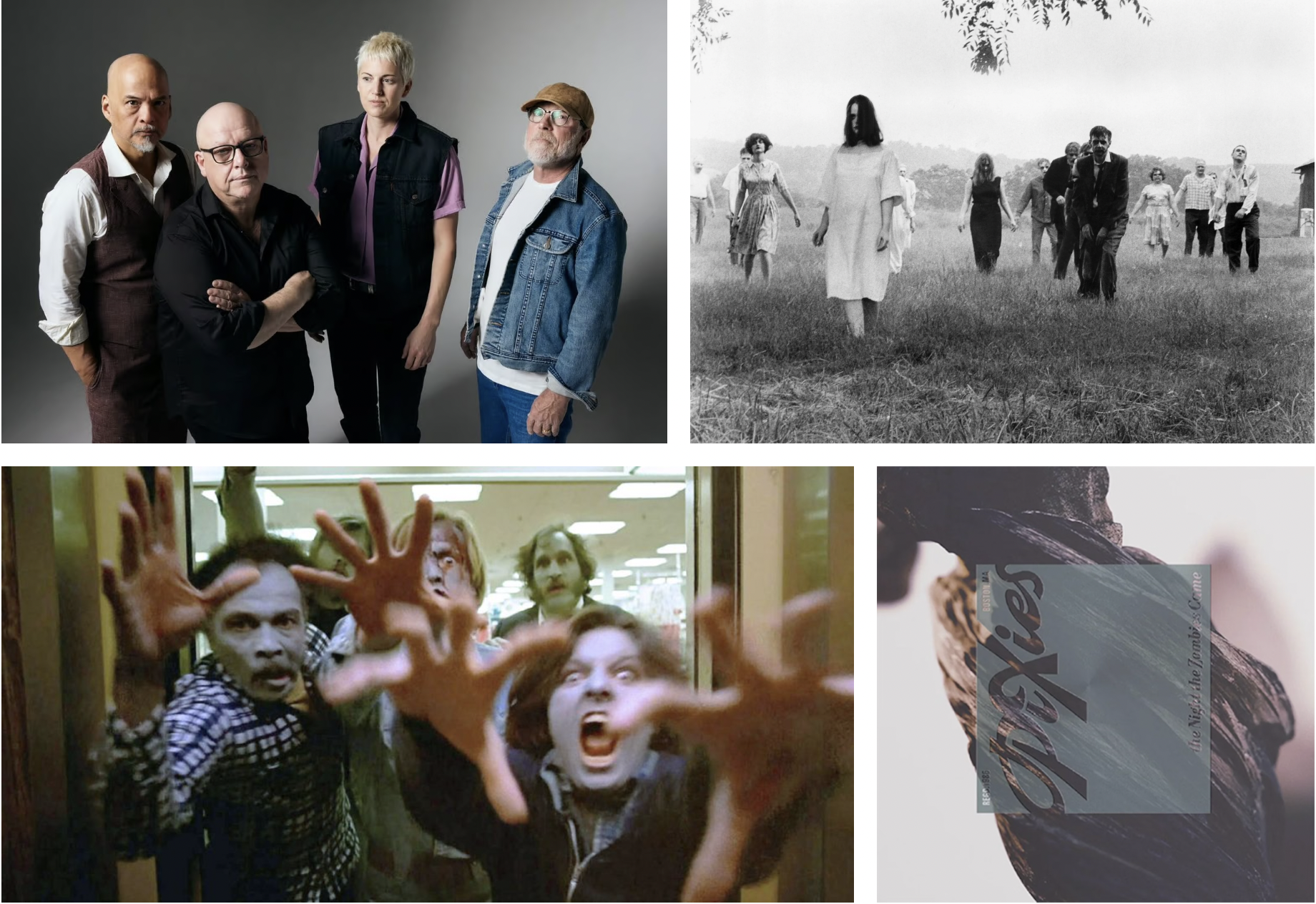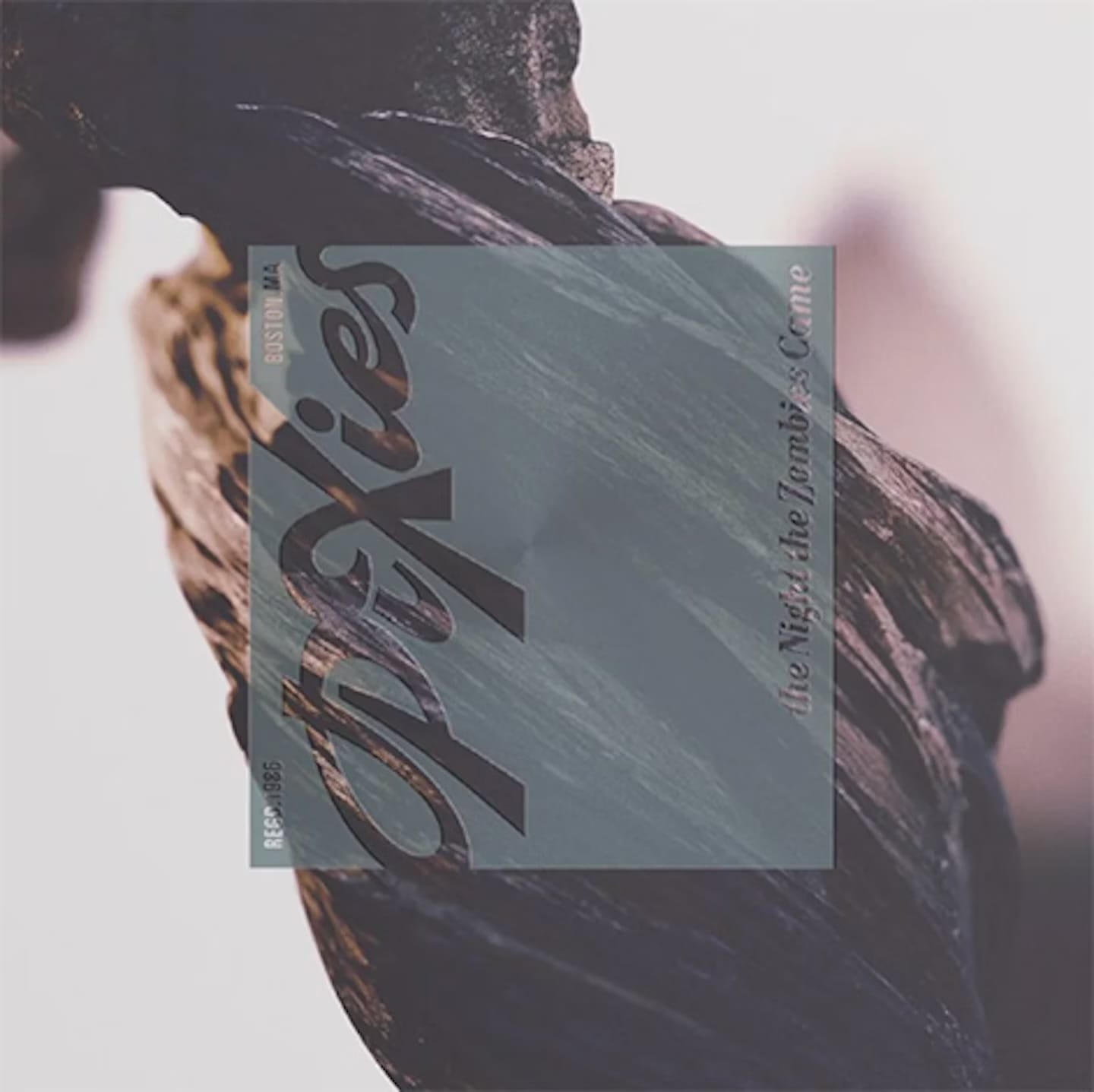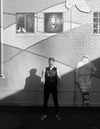Night of the living Pixies
The Night the Zombies Came

Happy Halloween! Today J. Bennett joins us to write about the new zombie themed Pixies album and takes a humorous look back at the band's preoccupation with the living dead throughout their career.
He previously wrote for Hell World about his favorite Soundgarden songs.

For more on zombies also read this piece by Jonathan Katz. “For colonizers, zombie stories are powered by fears of revenge or contagion by the people they conquered,” he wrote. “For the colonized, the zombie retains its older connotations: fear of abduction, assimilation, and losing one’s soul.”

This piece was originally for paid-subscribers only. Please consider a subscription to help pay our great contributors.

Night of the living Pixies
by J. Bennett
When there’s no more room in hell, the dead will walk the earth.
—Dawn of the Dead (1978)
The new Pixies album is called The Night the Zombies Came. On it, Black Francis and his retinue hail the titular undead in all their rotting, shuffling, brain-eating glory. Which is appropriate, given that the band itself rose from the grave in 2004 after 11 years of dormancy and, like, bad blood.
Of course, bad blood is the genesis of the zombie. Contamination. Infection. You’ve seen The Walking Dead. Or at least Michael Jackson’s “Thriller” video. Even if you haven’t, you know the drill. They’re gross, they’re hungry, they often travel in packs. If you’re trying to kill one only a bullet to the head will do. Luckily they’re also slow. Or at least they were until 28 Days Later upped the ante with turbo zombies.
The thing about zombies is they tend to make more zombies. It’s no coincidence that many of the notable bands Pixies influenced also broke up (or went on “hiatus”) only to self-exhume for cash and prizes: Smashing Pumpkins, Weezer, Nirvana. Okay, maybe not Nirvana. But Dave Grohl is at least part zombie.
The Night the Zombies Came features zombies of both the Night of the Living Dead roaming-the-countryside variety and the Dawn of the Dead shopping-mall/consumerist-allegory variety. On “You’re So Impatient,” Black Francis takes his girl to the mall to catch a horror flick. Ever thoughtful, he’s brought a box of wine for the occasion. But she isn’t feeling it.
Maybe because it’s the Monroeville Mall, where director and zombie enthusiast George Romero shot Dawn of the Dead in 1977. Flush with producer Dario Argento’s cash, Romero flooded the suburban Pennsylvania shopping center with hundreds of extras plastered in legendary makeup man Tom Savini’s fetching blue-gray zombie hue. Box of wine? How about a box of ammo? You know, to kill all the fucking zombies. It’s a classic case of the songwriter misunderstanding their own song.
“Jane (The Night the Zombies Came)” is the album’s title track. In the song Jane is the only survivor of a zombie attack. We know this because Francis says, “Jane, she was the only survivor/the night zombies came.” Pretty straightforward, right? But there’s a twist: “He went on a walk with Jane/never was he seen again/European neighborhoods/hooked on drugs, lost in the woods/ but now I think I got, I got the goods on Jane.”
Sounds like Jane may have murdered this dude. The question is did she kill a zombie, or did she kill a human…on the night the zombies came? We just don’t know.
The song “Chicken” is about a headless chicken. The lyrics go like this: “Sometimes I feel like a chicken/pecking my way through the trees, when something aloft cuts my head right off/Now I’m dealing with decapitation.”
But here’s the thing, headless chickens can live for quite a while. Which makes them zombies. That’s just straight chicken science. Exhibit A: Mike the Headless Chicken, who lived for 18 months after being decapitated in 1945. His owner fed him with an eye dropper through the hole in his neck. They made $4500 a month on the sideshow circuit.
Maybe that seems like a lot of work to tie “Chicken” into the zombie theme, but then Francis does it himself in the same song: “Other times I feel as I’m an actor of zombie movies/searching for you/in town after town/a lover who ain’t going to kill me.”
But it’s not just the new album. As it turns out, Francis has been singing about zombies all along. Here are a few of the more prominent examples.
"Where is My Mind?"
Zombies are brain-dead. Hence, their insatiable appetite for human brains. Playing the role of the freshly turned zombie in this popular Pixies jam from 1988’s Surfer Rosa, Francis conjures the moment in which the undead’s rapidly deteriorating human psyche conducts one last self-examination: Where is my mind? The human being he was just hours ago was accustomed to misplacing his keys, his cordless phone (this was the ’80s, after all) or maybe even his smokes. But his mind? This is a new frontier. Alas, the final frontier before the bloodlust takes over. Or at least until Fight Club co-opted the tune.
"Wave of Mutilation"
Francis has gone on record saying “Wave of Mutilation” was inspired by an article he read about Japanese businessmen driving their cars into the ocean, wife and kids in tow, in dramatic murder-suicides brought on by the shame of business failures. But he’s also been transparent about how the song’s opening line, “Cease to resist,” is a play on the Charles Manson song “Cease to Exist,” which was famously recorded by the Beach Boys as “Never Learn Not to Love.”
The Manson Family were nothing if not zombies, brainwashed by a googly-eyed dirt merchant into doing his bidding. How did Crusty Chuck end up in prison for murder without actually killing anyone? He got his barefoot hippie girlfriends and a brain-dead cowboy to do it for him. Did I mention they were higher than Rush Limbaugh and Snoop Dogg at Reggae Sunsplash? Like I said: Zombies, dude.
"Is She Weird"
On this deep cut from 1990’s Bossanova, Francis asks, “Is she weird, is she white, is she promised to the night?” before helpfully adding, “And her head has no room.” This isn’t the Alternative Nation equivalent of Cleavon Little asking, “Where are the white women at?” in Blazing Saddles. Black Francis’ weird lady is white as in pale as in dead. Her head has no room because she’s a zombie. She’s promised to the night like vampires and werewolves and dudes who work the graveyard shift at 7-11. Francis is singing a love song to his zombie bride, you guys. It’s obvious.
"Here Comes Your Man"
Cultural critics would have you believe this song is some sort of instant-coffee alt-rock mashup of ’60s chestnuts “Leader of the Pack,” “Then He Kissed Me” and “I’m Waiting for the Man.” And maybe that’s true, for all we know. Francis says he wrote the song when he was 15, way before Pixies came along. In 1989, he told NME that it’s “about winos and hobos traveling the trains who died in the great California earthquake.” But he didn’t mention the original lyric, which has eluded even the most diehard Pixies scholars for decades: “Here comes your man. He’s a zombie.” No need to fact-check me on this one. It’s totally legit.
"Velouria"
This triumphant 1990 single is the mother of all Pixies zombie tunes. When Francis performed the song acoustically on Minnesota Public Radio in 2009, he explained that it was inspired by a woman he’d met who was involved with the Rosicrucians, a Christian Kabbalist sect with a convoluted history of legends, manifestos and hoaxes. Their symbol is the rose cross, which is exactly what it sounds like: A cross with a rose in the middle.
But we all know the Romans didn’t crucify a flower. Instead, they crucified two thieves and a political rabble-rouser called Jesus of Nazareth—who went on to become the world’s second documented zombie. The first was a guy named Lazarus, a panhandler from the West Bank. According to the New Testament, Jesus brought Lazarus back from the dead. Then, after his own crucifixion, Jesus himself was brought back from the dead by The Big Man in the Sky. Allegedly. Look, this is a really old story. Plenty of people think it’s bullshit. But it’s an early example of Black Francis’ longtime fascination with zombies. Which we’ve now established with 100 percent dead-on-balls certainty.
Ok, but is The Night the Zombies Came any good? Kim Deal-era Pixies purists and dudes who write for The Guardian will tell you no. People who’ve followed and admired Black Francis’ solo career as Frank Black might disagree. Does The Night the Zombies Came sound like Doolittle or Bossanova or Surfer Rosa? Of course not. Just as zombies are not exactly their former selves, Francis, guitarist Joey Santiago and drummer David Lovering are several decades older and likely not in the same headspace as their younger selves.
But Zombie tracks “You’re So Impatient,” “Motoroller,” “Chicken” and “Oyster Beds” will scratch that late 80s/early 90s Pixies itch. Because in the end? The zombification process is just a distillation of what we are as humans: Consumers. Of food. Of resources. Of Pixies albums.
J. Bennett is a freelance writer who contributes to Creem, Decibel, Revolver and The Creative Independent, among others.
